The Food Network Challenge Has Changed A Lot Since 2005

- Oops!Something went wrong.Please try again later.
- Oops!Something went wrong.Please try again later.
The "Food Network Challenge" was an iconic cooking show that ran for over a decade. It first aired when low-rise jeans were in fashion (the first time around). Seriously, the first episode aired in 2005, the same year the first video was uploaded to YouTube. For reference, "Shrek 2" and "Mean Girls" had also just been released.
At its heart, the show was consistent throughout its existence: a feel-good cooking show where professional chefs competed for $10,000 in a fun-filled challenge. Whether carving pumpkins for Halloween or building princess cakes at Disney World, the contestants were there to show their technique, their flair for flavor, and, above all, their creativity.
The show began in 2005 and was originally hosted by Keegan Gearhard. It continued pushing until 2011, when it went on a haitus. In 2019, Food Network announced a reboot. This only lasted until 2020, however, as the show took a hiatus during Covid-19. Production has not resumed since, and the Food Network has given no indication of whether the show will return.
In the meantime, we can dive into old episodes. As we do, it is impossible to miss how much evolved throughout the seasons. There have been some drastic changes! In later years, most episodes involved contestants creating elaborate cakes centered on pop-culture themes. Celebrity chefs and hosts were introduced and the pool of contestants widened from professionals to include passionate amateurs.
Read more: The Truth About The Worst Cooks In America
The Show Began With Flavor Fights
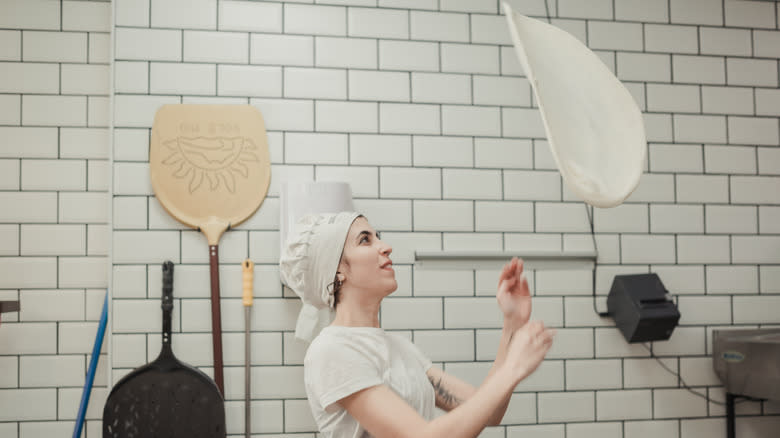
Earlier seasons of the "Food Network Challenge" featured diverse challenges and varied cuisine: there could be a Bocuse d'Or challenge one week and a bartender battle the next. There was a real push for industry pros to test their culinary capabilities — and in some cases — to do things that hadn't been done before. Some episodes centered around an attempt, or multiple attempts, to set a new Guinness World Record — for example, making the most pancakes in one hour, building the largest sculpture from popcorn, or performing the highest pizza toss.
Along with holiday challenges, contestants on early seasons of "Challenge" were sometimes tasked with regionally-focused missions: a Southern living showdown, a camp-fire cook-off, or a battle for the best Texas steak. Season 7 saw three Italian chefs put a spin on family recipes — with the surprise twist that their relatives came to help. A later episode focused on Mardi Gras celebration foods.
In later years, the scope of the challenges narrowed. A greater amount of episodes had a baking focus and presented contestants with cake-decorating challenges. During season 11, chefs visited Western Caribbean destinations only to attempt to represent their excursions with sugar art. Perhaps Food Network was looking to carve out a niche for "Challenge," with the thought that viewers were more interested in cakes that look good over foods that pushed the boundaries. However, the show's focus on style over substance led some viewers to suggest it has lost its way.
Former Host Keegan Gerhard Became A Head Judge
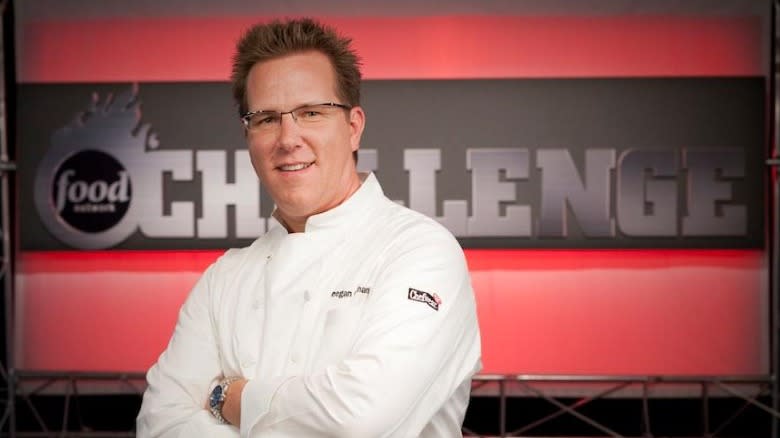
In April 2010, the show's original host, Keegan Gerhard, was promoted to head judge alongside the late Kerry Vincent. The two brought a lot of expertise to the judge's panel. Between the show's introduction and his ascension to permanent judge, Keegan Gerhard cemented himself by becoming the chef and owner of D Bar Restaurant in Denver, Colorado. At one point, Chocolatier Magazine named him one of the top 10 pastry chefs in the U.S.
Kerry Vincent also had a history in pastry as a specialist cake designer. Along with establishing banner baking events like the Oklahoma State Sugar Arts Show, she played a key role in bringing fondant icing to the U.S., when she pitched a manufacturer in her native home of Australia to consider building up manufacturing in Texas. Upon being replaced as host by Claire Robinson, Gerhard and his new co-host Vincent were accompanied on the panel by a rotating cast of guest judges and experts from diverse backgrounds.
Some guest judges weren't related to cooking at all and instead brought star appeal, such as former pop star Tiffany, who was a judge on season 13, episode 1. Later seasons featured people like Roger Allers, co-director of "The Lion King," who judged an episode based on Disney's hit movie, and Craig Shulz, the son of Peanuts creator Charles Shulz. After the 2019 reboot, Keegan Gerhard returned as head judge, without Kerry Vincent, who sadly passed away in 2021.
Over The Years, Celebrity Chefs Joined The Mix
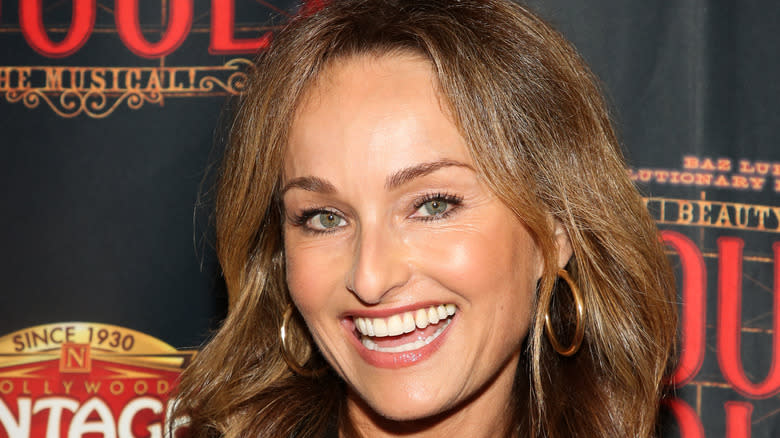
When the "Food Network Challenge" launched, it pitted unknown professional chefs against each other. Over the years, celebrities were brought into the fold of the competition. Food Network probably hoped that this sprinkle of stardust would allow it to attract new viewers to the show at a time when celebrity chefs were growing increasingly popular.
Amongst its expert judges, the show featured renowned chefs and homemakers alike. In a season one episode that pitted chefs against each other in a college cook-off, Paula Deen played judge and jury for the competitors in Savannah, Georgia. Similarly, long before he became America's most famous weatherman, Al Roker, who previously hosted Food Network's "Roker on the Road" stepped in to preside over a barbecue challenge. Another early-aughts celebrity chef who frequented "Challenge" was New Orleans John Besh, who oversaw a seafood cook-off. Other celebrity chef judges included Food Network's own Giada De Laurentiis, who judged a special Thanksgiving edition of "Challenge."
Joining the ranks of celebrity chef judges were several contestants who had themselves gained fame through repeated appearances on "Food Network Challenge." Bronwen Weber, who competed in 22 different challenges and won eight, is one such example.
Food Network Challenge Opened Its Doors To Amateurs
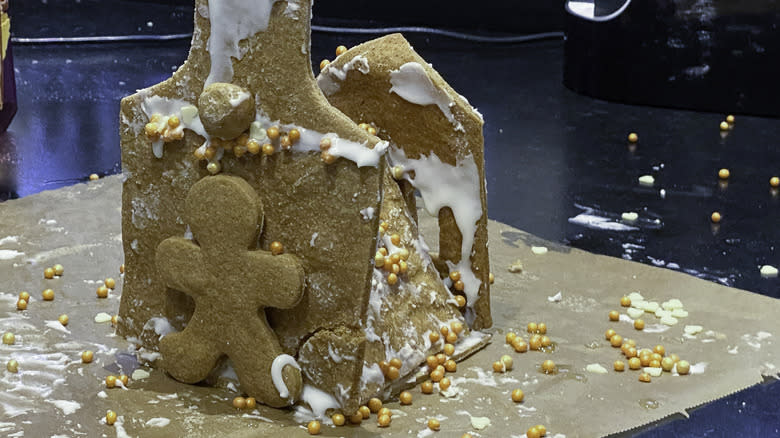
Despite relying on star power via judges, "Food Network Challenge" needed a way of providing more relatable characters. One method was for the "Food Network Challenge" to include amateur chefs, not only professionals. While the early seasons were reserved for chefs, most of them the owners of family bakeries and restaurants, in later seasons, some episodes began to see amateurs compete, too.
For instance, one memorable episode, the "National Beef Cook-Off," featured home chefs showing their skill in cooking beef for a $50,000 prize. The "Build a Better Burger" challenge allowed amateur cooks to demonstrate their prowess in grilling for a similar amount. These challenges often provided contrast to broadcasts like season one, episode four, where 12 of the world's top pastry chefs came from across the globe to Las Vegas in order to compete in a worldwide pastry championship.
Post-reboot, "Challenge" seemed to primarily feature amateur bakers and aimed at making the culinary challenges more relatable to a broader audience while showing the diverse cooking talents that exist. However, the move backfired at times; some viewers criticized the level of the participants and compared the cakes to those on "Nailed It!" a baking competition show on Netflix where amateurs compete for cash prizes by attempting to recreate complex cakes — usually to disastrous results.
Ian Ziering Tried To Revive The Entertainment Factor For Wider Audiences
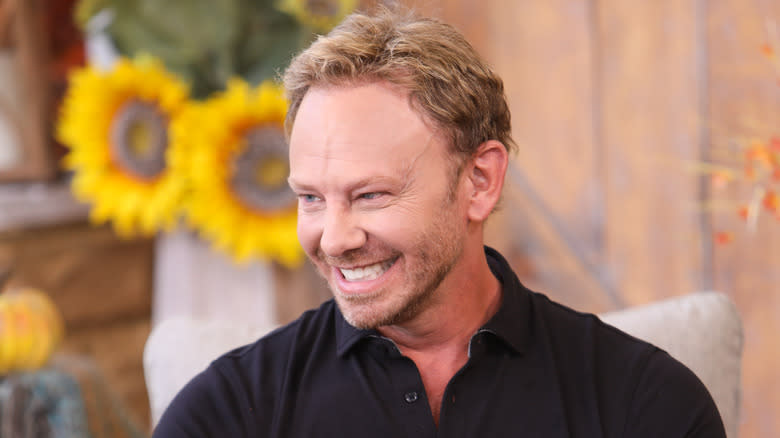
In 2019, Food Network announced that it was rebooting "Challenge" and appointing Hollywood actor Ian Ziering as the new host. He succeeded former host Claire Robinson, a seasoned chef and cookbook author. The decision to enlist Ziering, known for his roles in iconic TV shows like "Beverly Hills, 90210" and in the internet-famous "Sharknado," was unexpected, particularly considering his lack of culinary expertise.
In an interview with Entertainment Weekly, Ziering admitted that he knew nothing about baking — but was very excited for his new role. "I'm thrilled to be hosting the return of 'Food Network Challenge,'" he said. "Watching these contestants create edible works of art is so exciting, and I can't wait for viewers to see these mind-blowing creations."
Ziering's excitement at seeing contestants' creations was infectious, and commentators suggested that his background in television would bring more entertainment elements to the show, catering to a broader audience beyond just food enthusiasts. Ziering's presence was definitely a strategic move to bridge the gap between the show's professional bakers and the armchair chefs watching from home, potentially attracting a wider demographic of viewers.
Pop Culture Became The Heart Of Many Challenges
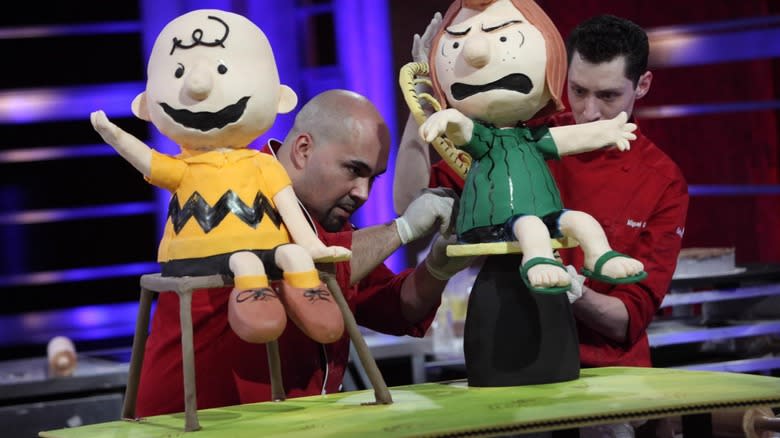
Cakes always had a place in "Food Network Challenge." In between entree-centric cook-offs and savory challenges, desserts offered sweet relief and gave the show a wider range of coverage. Prior to Keegan Gearhard's move to judge, and especially afterwards, cake and desserts began to make up a central focus for "Challenge." (And there seemed to be bonus points when the cakes reminded viewers of childhood movies.) Along with the aforementioned "Lion King," Dora the Explorer, the Simpsons, Sponge Bob Squarepants, and Toy Story 3 characters were all recreated in cake and fondant.
Although building through the later seasons, the shift to pop-culture desserts seemed to accelerate especially after the show's reboot, which saw almost an exclusive focus on cake decoration revolving around popular TV, movie franchises, or other elements of pop culture. In season 14, contestants were tasked with creating cakes inspired by the board game Monopoly — an old-timey classic and a source of much family fun and feud. "Back to the Future" and "A Christmas Story," also got the fondant treatment, with the latter becoming a highly-memed episode across social media.
Often, the contestants were charged with adding an interactive element to their cakes. In an episode on Pokemon cakes, the creatures created could breathe fire, blast out water, or generate electricity. During the 12th season, there was even a Demolition Derby Cakes episode — where contestants built a large cake car and a smaller remote-controlled version.
The Production Quality Of The Show Soared

In the early 2000s, TV viewers believed they were looking at the pinnacle of production quality. They would make fun of their parents' shows—blurred, oddly tinted, or resorting to bubble wrap for special effects. Yet, looking back now, 2000s TV appears just as dated. Production technology has come forward leaps and bounds, and you can see this when you look at how "Challenge" has evolved over the years.
One of the most significant breakthroughs has been the adoption of high-definition (HD) and later 4K Ultra HD resolutions, which offer far greater detail and clarity than was previously available by packing in more pixels. Meanwhile, the introduction of HDR technology improved the range of colors and the contrast, making scenes appear more vivid and lifelike.
When you look back at the first seasons of "Challenge," you might notice that the colors look faded or like you were viewing them through a mesh screen. By season 14, however, the camera portrayed the colors and textures of the chefs' creations in a very true-to-life manner. For the viewer, this meant a more immersive experience and made the tasty treats all the more tantalizing because we could see them rendered in the most minute detail on our screens. Perhaps it is no wonder that "Challenge" shifted its focus towards decoration — we could enjoy it far more once we have the production quality to capture it.
Food Network Challenge Became Active On Social Media

TV shows no longer exist solely on-screen: viewers talk about them on Instagram, X (formerly Twitter), Reddit, and other social media. This explains why, in its later years, "Food Network Challenge" followed a global trend in food TV and became active on social media. The visually impressive creations of "Challenge" were perfectly adapted to social media, with pictures and videos of the masterpieces (or the failures) of contestants being easy to share content.
While "Food Network Challenge" never specifically announced a strategy for using social media, it's well understood that social media interaction can boost audience engagement. The Food Network social accounts — especially following the 2019 reboot — frequently posted recaps of "Challenge" episodes, behind-the-scenes content with new host Ian Ziering, and sneak peeks of upcoming challenges. Not to mention, more than a few of those less-than-stellar later season bakes became meme-worthy content that ultimately had more people talking about "Food Network Challenge."
Food Network Challenge Gave Up On Adventurous Filming Locations

Something that once set the "Food Network Challenge" apart in its early seasons was its on-location filming. The chefs and bakers battled it out in front of live audiences at tourist attractions such as Disney World. When the season was right, contestants might also find themselves cooking at a Food Network sponsored Food and Wine Festival, in South Beach, Florida. Contestants appeared at the Bocuse d'Or in Lyon, France, and the World Pastry Championship in Las Vegas. This gave each episode a unique story and took viewers on a journey.
After the reboot in 2019, all episodes were shot in the Food Network studios. While this move might have lacked the visual and thematic multiplicity of earlier seasons, it brought its own benefits. It created more consistency in the series, with a set-up that could be easily replicated in each episode. This narrowed the show's focus, affirming its brand identity amongst competitors. It also gave greater control over filming conditions, lighting, and sound, which allowed the show to better showcase the intricacies of the masterpieces being created
Food Network Challenge Inspired Several Spinoffs
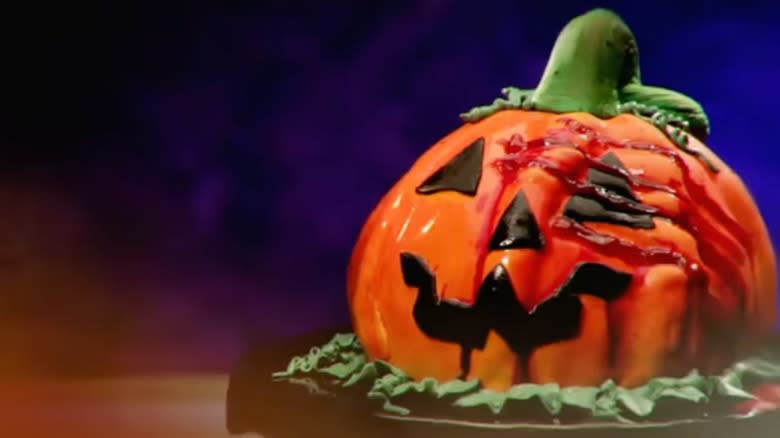
It's a well known format these days: A host of professional (or amateur) chefs compete in a themed contest, going through various rounds with different constraints. A panel of judges evaluated their dishes based on taste, presentation, and creativity, and the ultimate winner receives money, opportunities, or both. Today, competitive cooking shows are booming, and much of that success was built on the influence of early shows like "Food Network Challenge," which created a successful formula. In fact, the layout of "Food Network Challenge" was so successful that it went on to echo in a few spinoff specials from the original series; some episode themes even developed into entire stand-alone shows.
In 2009, a special version of the Challenge was launched: "Last Cake Standing." Eight competitors went head-to-head over six episodes, with one eliminated each time, and challenges growing increasingly tricky. The finale pitted the three contestants against each other in a 24-hour marathon to bake a cake for a set of sextuplets. The "Kids Baking Championship" offered young talents the opportunity to compete. "Halloween Wars" drew inspiration from Halloween-themed challenges featured in various episodes of "Food Network Challenge," while "Holiday Baking Championship" followed the episode "Extreme Holiday Cakes," in which four cake artists used pyrotechnics for some explosive Christmas treats. "Challenge" specific specials appeared across Food Network for Thanksgiving as well, and today, the channel is no stranger to shows based on the competitor-judge model.
Food Network Challenge Helped Launch Careers
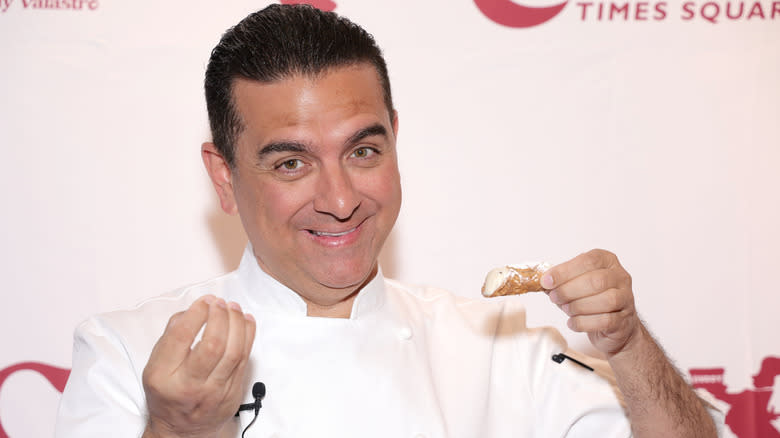
For many chefs and bakers, "Food Network Challenge" was more than just a chance to win money and see themselves on the screen. It was a launchpad for their careers. Success on "Challenge" led to book deals, appearances on other cooking shows, or even the opportunity to host a new show. One example is Alex Guarnaschelli, who became a household name since she participated in the show.
Similarly, Duff Goldman first competed in "Food Network Challenge" in 2005. At the time, he ran the bakery Charm City Cakes and was making a name for himself through his unique approach to cake baking, which blended his passions for rock music and pastry art. Despite an accident where he severely burned his hand just days before the competition, Goldman performed impressively during the competition — sporting a large bandage on his hand. After a few more appearances, Food Network recognized his potential and gave Duff Goldman his own show: "Ace of Cakes."
Buddy Valastro was also given his own show after competing in "Food Network Challenge." After taking over his family's business, Carlo's Bakery, at the age of 17, Buddy expanded into making designer wedding cakes, which were featured in high-end bridal magazines. He took home $10,000 after winning Challenge's "Battle of the Brides" episode during season five. A year later, Valastro got his own show on TLC called "Cake Boss," which ran from April 2009 until April 2020 and followed daily life at Carlo's Bakery.
Read the original article on Mashed

